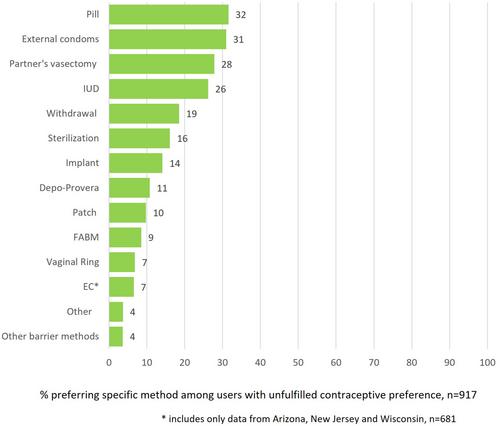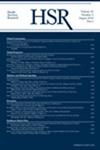Unfulfilled and method-specific contraceptive preferences among reproductive-aged contraceptive users in Arizona, Iowa, New Jersey, and Wisconsin
Abstract
Objective
To identify characteristics associated with unfulfilled contraceptive preferences, document reasons for these unfulfilled preferences, and examine how these unfulfilled preferences vary across specific method users.
Data Sources and Study Setting
We draw on secondary baseline data from 4660 reproductive-aged contraceptive users in the Arizona, Iowa, New Jersey, and Wisconsin Surveys of Women (SoWs), state-representative surveys fielded between October 2018 and August 2020 across the four states.
Study Design
This is an observational cross-sectional study, which examined associations between individuals' reproductive health-related experiences and contraceptive preferences, adjusting for sociodemographic characteristics. Our primary outcome of interest is having an unfulfilled contraceptive preference, and a key independent variable is experience of high-quality contraceptive care. We also examine specific contraceptive method preferences according to current method used, as well as reasons for not using a preferred method.
Data Collection/Extraction Methods
Survey respondents who indicated use of any contraceptive method within the last 3 months prior to the survey were eligible for inclusion in this analysis.
Principal Findings
Overall, 23% reported preferring to use a method other than their current method, ranging from 17% in Iowa to 26% in New Jersey. Young age (18–24), using methods not requiring provider involvement, and not receiving quality contraceptive care were key attributes associated with unfulfilled contraceptive preferences. Those using emergency contraception and fertility awareness-based methods had some of the highest levels of unfulfilled contraceptive preferences, while pills, condoms, partner vasectomy, and IUDs were identified as the most preferred methods. Reasons for not using preferred contraceptive methods fell largely into one of two buckets: system-level or interpersonal/individual reasons.
Conclusions
Our findings highlight that avenues for decreasing the gap between contraceptive methods used and those preferred to be used may lie with healthcare providers and funding streams that support the delivery of contraceptive care.


 求助内容:
求助内容: 应助结果提醒方式:
应助结果提醒方式:


